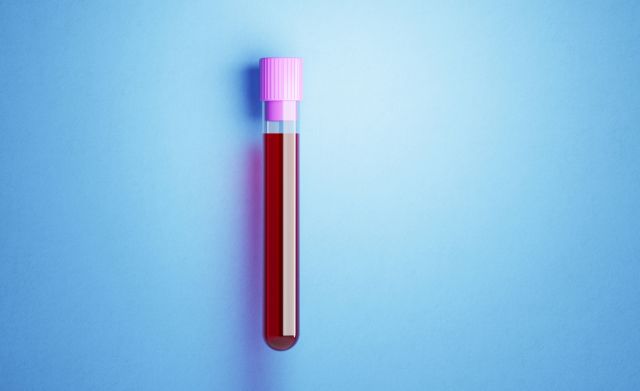Iron deficiency anemia (IDA) occurs when the body doesn't have enough iron. As a result, the body is unable to synthesize adequate amounts of hemoglobin—a protein in red blood cells that’s responsible for carrying oxygen to organs and tissues.
This can lead to a number of symptoms, including weakness, fatigue, increased heart rate, shortness of breath, dizziness, headaches, and pale skin. IDA can also cause changes in moods and emotions, causing some people to feel anxious or depressed.
However, in its early stages, IDA may not cause any noticeable symptoms. Fortunately, routine bloodwork can help monitor iron levels and spot any abnormalities early.
If results from a routine blood test show that your hemoglobin levels are low—or that your red blood cells are smaller and paler than they should be—this could suggest iron deficiency anemia.
As a result of these findings, your healthcare provider may order a panel of blood tests that take a closer look at your iron levels.
What will the tests show?
Blood tests can tell you quite a lot about your iron levels. For example, certain tests check for the amount of iron that’s circulating in your body, while some check for the amount of iron your body is storing. And others look at the proportion of red blood cells in your body to the number of white blood cells and platelets.
Here’s a breakdown of what the different terms mean:
- Serum iron. Serum is the liquid that remains when red blood cells and clotting factors have been taken away from the blood. This test measures the level of iron in serum. Because the amount of iron in the blood varies throughout the day, and also from day to day, serum iron is almost always measured alongside other iron tests.
- Serum ferritin. When you eat foods containing iron, your body immediately uses some of that iron. But it also stores some iron for times when you’re not getting enough iron from the foods you’re eating. This iron is stored within a protein called ferritin. If a serum ferritin test shows your ferritin levels are low, this means your body is digging deep into your iron reserves.
- Transferrin. Transferrin is a protein made in the liver. It helps move iron through the blood, so iron can reach important organs and structures. When iron stores are low, transferrin levels will be higher—this helps more iron get to the blood.
- Total iron-binding capacity (TIBC). This test measures the ability of your blood to bind to iron and transport it around the body.
- Transferrin saturation. This reading is considered a good indicator of the amount of iron depletion in the body. It tells your healthcare provider how much iron in the blood is attached to transferrin. Ideally, transferrin should be 20 to 50 percent saturated with iron. A low transferrin saturation often indicates iron deficiency.
- Unsaturated iron-binding capacity (UIBC). This test shows how much transferrin is not attached to iron.
- Hematocrit. Your blood is made up of red blood cells, white blood cells, and platelets. A hematocrit reading measures the proportion of red blood cells in your blood. Low red blood cell levels could indicate iron deficiency.
Treatment for IDA
Iron deficiency anemia can often be treated by increasing your intake of iron-rich foods, or by taking oral iron supplements (under the guidance of a healthcare provider) to replenish the iron levels in your body.
However, depending on certain factors—such as medical history, the severity of iron deficiency, or side effects while taking iron supplements—iron infusions may be recommended. During an iron infusion, a fluid solution containing iron is administered by an intravenous (IV) infusion.






